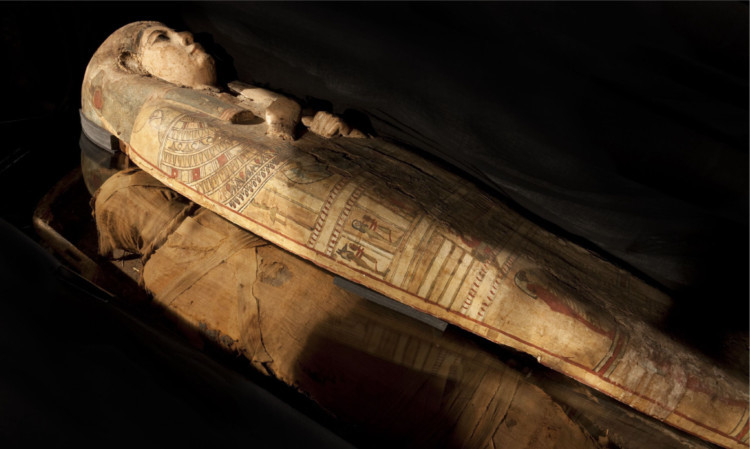For almost 2,500 years she slumbered in the earth, nameless and unremembered.
Now, however, a groundbreaking study into Perth Museum’s ancient Egyptian mummy has begun to reveal much that was not previously known.
‘Ta-kr-hb’, which is pronounced ‘Takherheb’, is known to be a female name from its appearance in other inscriptions and although the meaning has not been established researchers now believe that was the mummy’s name in life.
She had been in Perth’s collection since 1936, when it was donated by the closing Alloa Society of Natural History and Archaeology, 40 years after they acquired it in 1896 from the Government Museum in Cairo.
Little was known about her, however, until X-rays and CT scans were undertaken this year as part of a study by members of Manchester University’s KNH Centre for Biomedical Egyptology.
The form and decoration of the coffin and the legible hieroglyphs indicate that it was made for a female of the 25-26th Dynasty of Ancient Egypt, meaning Takhereb probably lived some time between 760BC and 525BC.
The style suggests it was probably made in the provincial town of Akhmim, which is on the east bank of the Nile and today is the largest town in Upper Egypt.
As well as revealing her possible identity and where she came from, this stage of the investigation has also provided vital information about her diet, the mummification process, her dental problems and even injuries she may have suffered prior to death.
This is the first time the mummy has undergone any investigation of this type.
The work by the Manchester team is ongoing and may eventually do more than return her name.
Data from the scans may enable researchers to create a facial reconstruction, enabling the public to see what Takherheb may have looked like in life.
For more information on the investigation visit www.pkc.gov.uk/theperthmummy or knhcentre.manchester.ac.uk/research/perthmummyproject.
